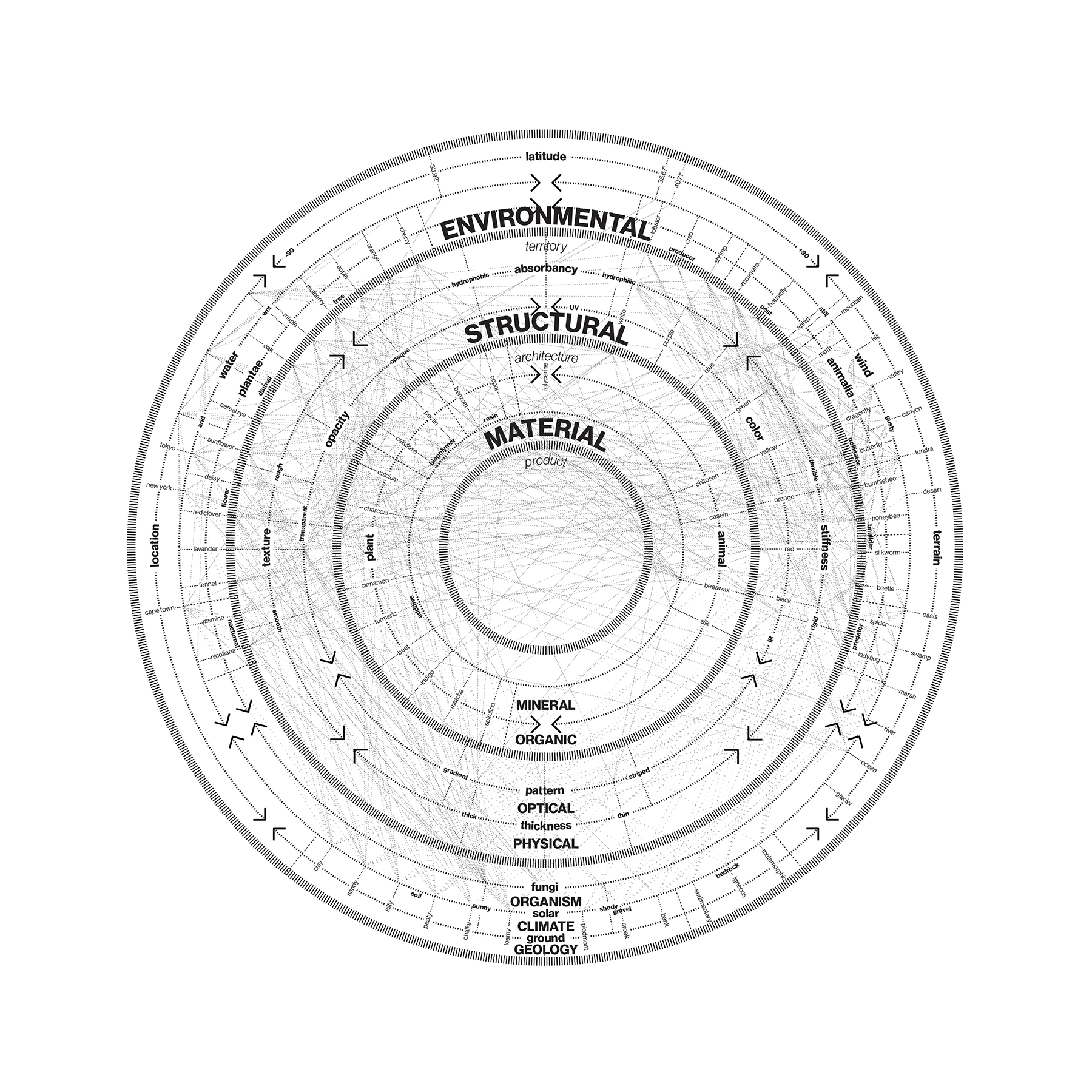
Ecosystems consist of matter and energy. Matter engages in mutualistic, commensal, or parasitic relationships, and acts on those relationships by storing energy or converting it into action. In living organisms, atoms use energy to form molecules, molecules aggregate to make cells, cells associate into tissues, tissues organize into organs, and organs comprise organisms. At each length scale, a system’s behavior is determined by the sum of interactions between its components.
Since matter and energy are neither produced nor destroyed, bottlenecks in these cycles can easily form when a large group of organisms consumes more than it produces. At equilibrium, ecosystemic niches cycle matter and energy in closed-loop resource cycles, such that the products of one are broken down and transformed by another. As such, disequilibrium in one system differentially impacts all others. Thus, urban systems can and should be designed, created, and augmented by biologic processes to function as living ecologies, rather than inert machines.
To our benefit, humans have demonstrated an incredible ability to acquire, manufacture, and distribute resources to a massive number of people. To our detriment, we do so through mass-extraction, mass-production, and mass-disposal -- i.e., we take from the earth much more than we put back. The products and structures we create with synthetic materials are homogeneous, ecologically deleterious, and unresponsive to the world around them, and take far too long to degrade back into the earth.
Therefore, we have built a library of materials composed of biopolymers derived from organic waste streams such as those for produce and shrimp shells. These biologic primitives serve as a palette from which to digitally fabricate products and structures that engage in symbiotic relationships with their ecologies and are easily degraded to continue the natural resource cycles that enabled their synthesis. This swatch library includes materials that can comprise various tissues within an architectural physiology, including skeleton, skin, and shell. The properties and uses of these materials are highly malleable due to the dynamic behavior of biopolymers in different combinations and within various solvents, and as a result of tunable fabrication processes.